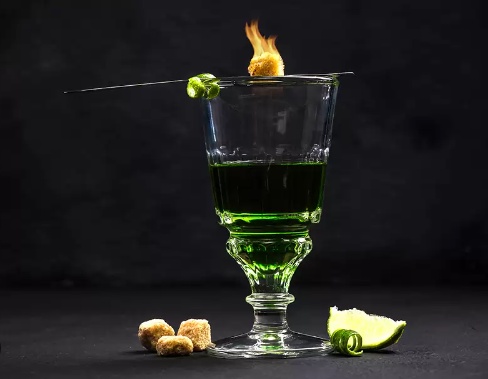Absinthe, often referred to as the "Green Fairy," has long captivated the imaginations of artists, writers, and connoisseurs around the world. This iconic spirit is renowned not only for its unique flavor but also for its historical associations with creativity and intrigue. Central to absinthe's allure is its primary botanical ingredient: wormwood. In this article, we'll embark on a journey into the fascinating world of wormwood liquor, exploring its history, preparation, and mystique.
The Enigmatic History of Absinthe
Absinthe, a strong anise-flavored spirit, originated in the late 18th century in Switzerland and quickly gained popularity across Europe. Its signature green hue is achieved through the infusion of various herbs, including wormwood (Artemisia absinthium). However, it was in the bohemian cafes of 19th-century Paris that absinthe became a symbol of rebellion and artistic inspiration.
The Wormwood Connection
Wormwood is not just an incidental ingredient in absinthe; it is the heart of the spirit's allure and its controversial history. Wormwood contains a compound called thujone, which was once believed to be responsible for absinthe's supposed psychoactive effects. The "absinthe madness" myth claimed that excessive consumption of absinthe, with its high thujone content, led to hallucinations and madness. However, modern research has debunked these claims, as the thujone content in absinthe is too low to induce such effects.
Crafting the Green Elixir
The production of absinthe is a meticulous and artistic process, much like the spirit itself. Here's a brief overview of how this intriguing liquor is made:
- Botanical Infusion: The primary step involves infusing a mixture of botanicals, which typically includes wormwood, anise, fennel, and various herbs, into a base spirit, usually distilled from grapes or grain.
- Distillation: The infused spirit is then distilled to extract the flavors and aromas from the botanicals, resulting in a highly concentrated liquid.
- Dilution and Coloring: The concentrated distillate is diluted with water to reach the desired alcohol content, and often, sugar is added for sweetness. This step also imparts the distinctive green color to the liquor.
- Bottling: The final product is bottled and usually has a high alcohol by volume (ABV), typically ranging from 45% to 74%. Some absinthes are bottled at even higher strengths.
The Ritual of Absinthe
Absinthe consumption is accompanied by a unique ritual, adding to its mystique. Here's how it's typically enjoyed:
- Glassware: A special absinthe glass, often with a built-in slotted spoon, is used for serving.
- Sugar Cube: A sugar cube is placed on the slotted spoon, and ice-cold water is dripped over it, slowly diluting the absinthe.
- Louche Effect: As the water mixes with the absinthe, it undergoes a mesmerizing transformation known as the louche effect. The liquor turns cloudy, creating an opalescent, milky appearance.
- Sip and Savor: The prepared absinthe is sipped slowly, allowing the complex flavors and aromas to be savored.
The Modern Resurgence
After being banned in many countries in the early 20th century, absinthe experienced a revival in the late 20th century. Regulatory changes and a renewed interest in craft spirits led to a resurgence of absinthe production around the world. Today, you can find a wide variety of absinthes, each with its unique character and flavor profile.
In Conclusion
Wormwood liquor, in the form of absinthe, is not just a beverage; it's a symbol of artistry, history, and intrigue. While its reputation for inducing hallucinations has been debunked, its allure remains intact. Absinthe continues to be a drink that sparks creativity, fosters conversation, and invites enthusiasts to savor its complex flavors while celebrating the rich heritage of this iconic spirit. Whether you're an absinthe aficionado or a curious newcomer, there's no denying the allure of the "Green Fairy" and the magic of wormwood in every glass.


No comments yet